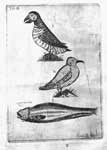8th May 2013: Isle of May - with SNH’s Coastal and Marine
Ecosystems Unit
Krystina Campbell writes:
A Grey and Windy Day! Afternoon rain
However, fears that the May Princess would stay in
her berth were unfounded and she stalwartly ploughed her way Forth from Anst’er,
with SNH’s CME Unit + guests like me,
who work in a ‘cross-team’ capacity. So
the SNHers included advisers who appraise the impacts of fisheries, oil and gas
exploration, production, pipelines, aquaculture and marine renewable
energy; the ornithologists, advisers of things that grow, creep, crawl, swim
and the myriad of types of beach and shore, sea- bottom and tide…
For some it was their first time
across, for others a repeat visit. So our impressions are varied – like Karen
sitting by me on the way back, my first time there was the surprise at the
amount of ‘hardware’ left over from lighthouses, with compressed air systems
for fog horns, bits of WWII infrastructure – concrete. After a few minutes this gives way, as you
walk round and experience your surroundings -- amidst sea, standing guard at
the mouth of the Forth. Overall, to visit the Isle of May is a visit
to the birds (the real owners) and all that this means – sounds, smells, being
allowed into their private space – that is the strongest, persistent impression.
From helping on the bird-count a few
years ago, my Isle of May image is the nesting Eider – the torpid Maduck, duckling cheeps and lawns
of pink and eider downy nests. But this year thrift was thrifty – the mounds of
flowering sea-pink, almost there but not quite and the sea campion nodded heavy
buds at us!
Central Scotland’s East Coast island is special on many counts. The research done
here since the 1930s has fuelled an increasing public awareness and interest of
the May’s wildlife. Many who cannot visit in person nevertheless are aware of
this natural, remote island – it is ever present in so many views from our
Forth shores and inland hills, there is a measure of access to it from books
and paintings; some of the peace there is transmitted in many other ways. It
inspires so many, in so many ways – it is a resource central to our wildlife
and our interaction with our environment. Appreciate its place in our art, history,
folklore, customs and language too!
Return to One Man’s Island.
Painting and Sketches from the Isle of May. Birlinn (2012)
The Firth of Forth
An Environmental History. T. C. Smout and Mairi Stewart . Birlinn (2012)
Hoping to omit puffin
photos I have had to bow to pressure, so I sign off with the earliest Scottish
puffin picture known to date, Sibbald’s of 1684.
Krystyna Campbell, Landscape adviser: coast &
seascapes



No comments:
Post a Comment